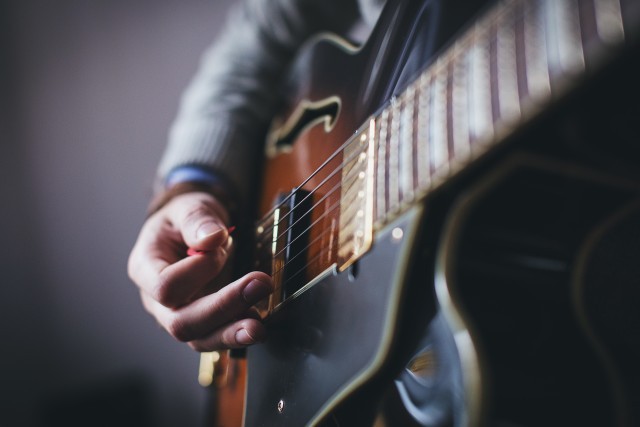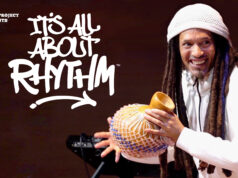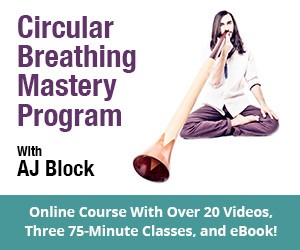I teach music to a lot of people and one of the most common things I hear from new students is “how do I create space in my life for this?” Working with mostly busy New Yorkers I can see why it would be difficult. Taking up a musical instrument is a great way to learn to focus your energy and if you can master the discipline of daily music practice, or sadhana as the yogis call it, you will be able to incorporate the approach of practice to your daily life beyond music.
To truly develop a good musical practice there are a few simple things that you can do. The first and probably most important is to create space. Space comes in the form of physical space, a room or outdoor area, and personal space. Personal space is very important because in today’s world we are often bombarded with text messages, phone calls, emails and even people knocking at our door. To create personal space it may be best to turn the cell phone off (or leave it in the other room), tell everyone in the house that you are going to practice and need to not be disturbed. In short, close yourself off from the outside world so you can really go deep into your music practice.
Now that you’ve created space for yourself, maybe you’ve allocated 30 minutes or an hour or 4 hours (yes some musicians will set aside this amount of time), how do you start your music practice? Every music teacher I have ever studied with would start with some sort of warm-up exercise(s). A warm-up can be something easy to play or sing that gets you into the flow of your practice. For vocalists there are some lip trill techniques and vowel sounds that are sung to warm up the pipes. Many melodic instrumentalists start by playing scales and arpeggios to the get the fingers warm. Many warm-ups span the whole range of the instrument from lowest to highest notes. For didgeridoo we often start with long-deep breathing to warm up the respiratory system, open-throated breathing to prepare the upper-airways and lip buzzing to prepare the lips. Since these are the three major elements that go into making the drone sound on didgeridoo, its appropriate that we gently ease into the practice through these warm-ups.
Once the initial exercises are complete many teachers will have their students work on fundamentals. For melodic instruments these can be scales, chords, arpeggios, simple pieces. My piano teacher, Alex Pryrodny, uses Bach’s Prelude in C for its subtlety, range and use of all 10 fingers.
Using beginning to intermediate level compositions is a great way to start. On didgeridoo we usually proceed by working on foundational techniques utilizing the abdominal muscles, cheeks and tongue. If the student already knows circular breathing then we work with a basic circular breathing rhythm that can be comfortably played.
Everything up until this point, maybe 10-15 minutes into your music practice may be things you’ve done before and are simply refining. Now its time to move into new material and exploratory practice. Here is where you can start to work on a new piece, a challenging rhythm, and utilize tools like the metronome to keep you in time. The metronome is an amazing tool because it allows you to play a musical phrase or piece at a slow enough speed for learning purposes, or as my teacher John Doheny used to say, tempo di learno (learners tempo).
You may also find that you like to sit and freely explore the instrument. This is a great thing to do and I suggest that every practice session have a segment of free exploration. This is how you will expand your musical vocabulary and invite greater potential with the instrument. I usually end the lessons that I teach with a free-exploration exercise. I’ve also taken lessons with my teachers in which this freedom is the main section of the lesson. It really depends where you are at with the instrument. For most beginners I recommend spending a lot of time with the fundamentals and metronome exercises until they are mastered.
What is the most important thing about your music practice? Have fun! If you are getting “bored” of practicing then maybe its time to spice things up. Pick up a different instrument, try singing, try drumming out different rhythms, learn a different song. There is a plethora of musical material out there to keep you inspired. Seek it out and try to apply it to your practice as much as possible.
As a final note I’d like to mention the importance of organizing your practice. It is recommended to keep track of your repertoire and the exercises you practice by writing out a daily list. A simple practice chart like the one provided here can help you stay on target with your practice.
Thanks for reading and I wish you a fruitful musical practice filled with joy, harmony, melody and fun!














Thanks for the tips, AJ! Great advice! One minor glitch – the link in “A simple practice chart like the one provided –>here<– can help you stay on target with your practice." gives an " Ooops… Error 404 Sorry, but the page you are looking for doesn't exist. " error.
Thank you for the note. I have fixed the practice chart link. Here it is: https://www.didgeproject.com/wp-content/uploads/2015/12/DidgeProject-PracticeChart-1.pdf